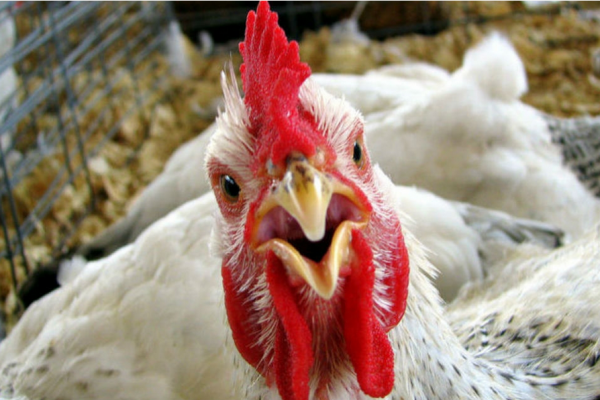2013-09-22

People in Germany eat more than 500 million chickens every year. The living conditions of these animals are partly abysmal. Aberrant behavior occurs often and among them severe feather pecking (SFP) cause’s major problems. SFP results in loss of feathers, skin damage and cannibalism. Now, a group of Animal Scientists from the Netherlands and Biopsychologists from Bochum studied the neurochemistry of aggression in two consecutive publications. They demonstrated that chickens with a lower tendency for SFP were less anxious and had lower levels of dopamine and serotonin turnover in somatomotor areas of the forebrain. In addition, they demonstrated that brain monoamine levels in brain areas that are involved in emotional behavior or are part of the basal ganglia-thalamopallial circuit are different in SFP-birds after a short stress period. In summary, these findings indicate that especially serotonergic neurotransmission in the dorsal thalamus, somatomotor forebrain, and striatum of hens depends on differences in behavioral feather pecking phenotype. These data show that stressful living conditions alter the serotonergic system in some individuals, leading to higher levels of anxiety and aggression.

People in Germany eat more than 500 million chickens every year. The living conditions of these animals are partly abysmal. Aberrant behavior occurs often and among them severe feather pecking (SFP) cause’s major problems. SFP results in loss of feathers, skin damage and cannibalism. Now, a group of Animal Scientists from the Netherlands and Biopsychologists from Bochum studied the neurochemistry of aggression in two consecutive publications. They demonstrated that chickens with a lower tendency for SFP were less anxious and had lower levels of dopamine and serotonin turnover in somatomotor areas of the forebrain. In addition, they demonstrated that brain monoamine levels in brain areas that are involved in emotional behavior or are part of the basal ganglia-thalamopallial circuit are different in SFP-birds after a short stress period. In summary, these findings indicate that especially serotonergic neurotransmission in the dorsal thalamus, somatomotor forebrain, and striatum of hens depends on differences in behavioral feather pecking phenotype. These data show that stressful living conditions alter the serotonergic system in some individuals, leading to higher levels of anxiety and aggression.